
Animal
07:32, 02-Mar-2019
Life below water: Nautilus, the extinction survivor being wiped out by man
By Zhu Yingming
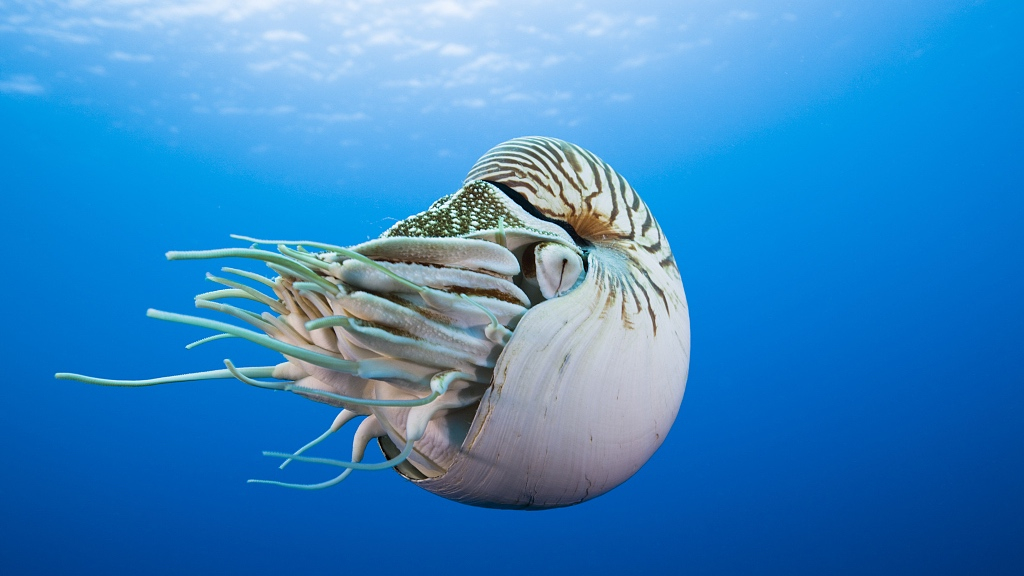
Nautiloids can be traced back to the late Cambrian Period, 541-485.4 million years ago, and they have changed little since the first fossil records from that era.
Their geometrically perfect shells are considered as the "natural embodiment of the Fibonacci spiral."
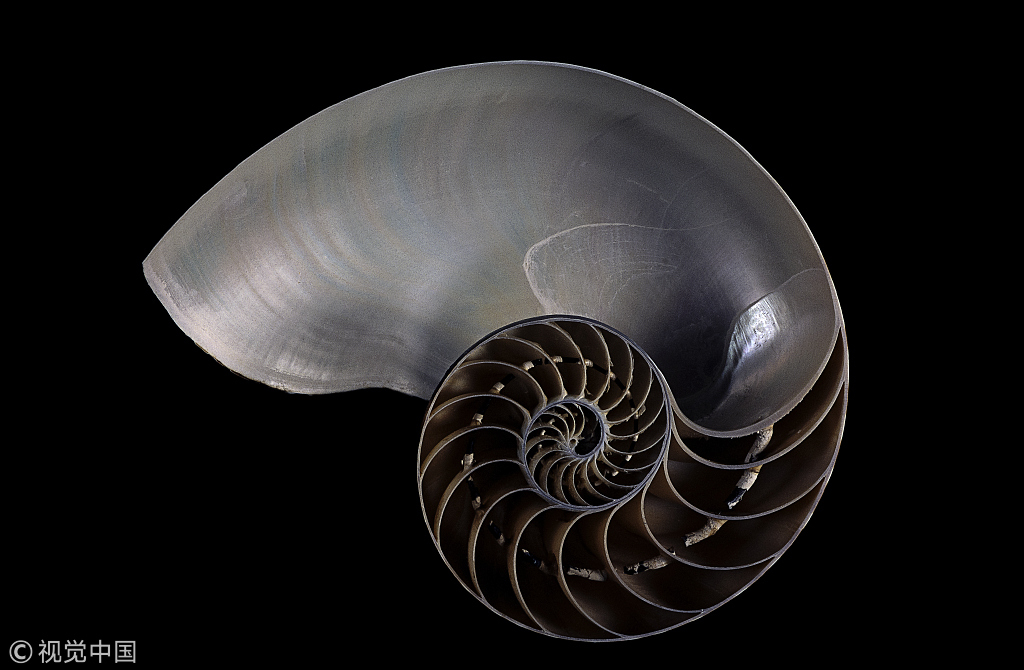
A chambered nautilus shell. /VCG Photo
A chambered nautilus shell. /VCG Photo
The shell is divided into dozens of chambers that fill with air, which makes nautiluses buoyancy experts.
In the 1870's classic sci-fi novel "20,000 Leagues Under the Sea" by French writer Jules Verne, the protagonist's submarine was named Nautilus, as was the real first all-electric propulsion submarine in 1886 and the first operational nuclear-powered submarine in 1954.
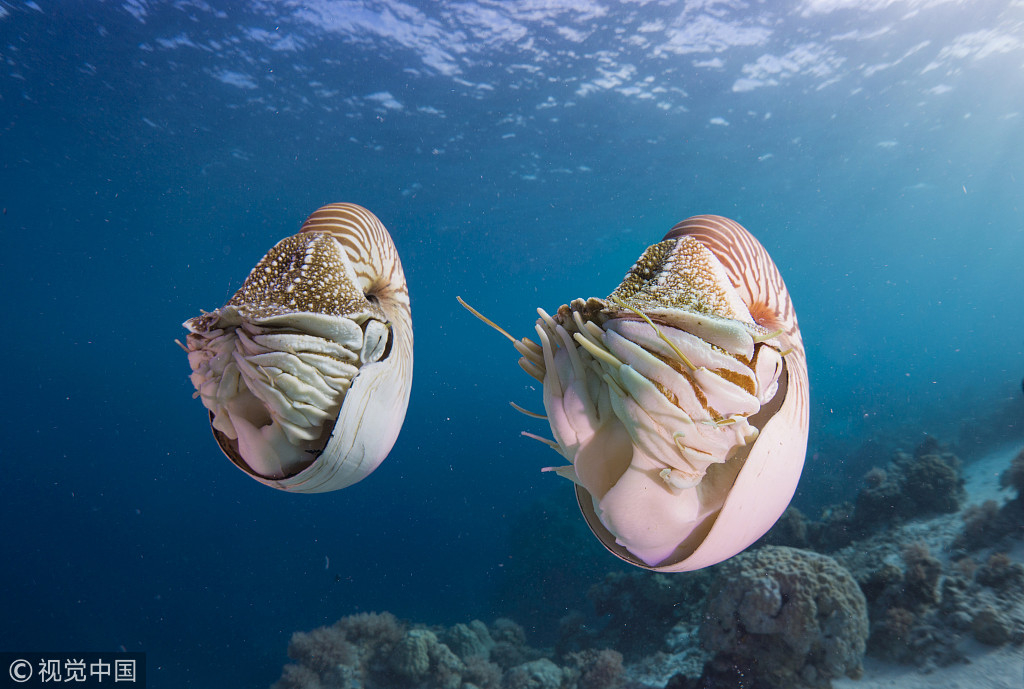
Palau nautiluses. /VCG Photo
Palau nautiluses. /VCG Photo
Having survived several major global extinction events, nautiluses are, however, suffering from overfishing for their unique shells.
They were added to CITES Appendix II in 2017, meaning the international trade in their shells is regulated but not totally banned.
Nautiluses are under first-class state protection in China, among which the chambered nautilus, also known as pearly nautilus, is the only of its kind in the South China Sea.
Unfortunately, being the most known and studied subspecies, chambered nautilus is also the most hunted.
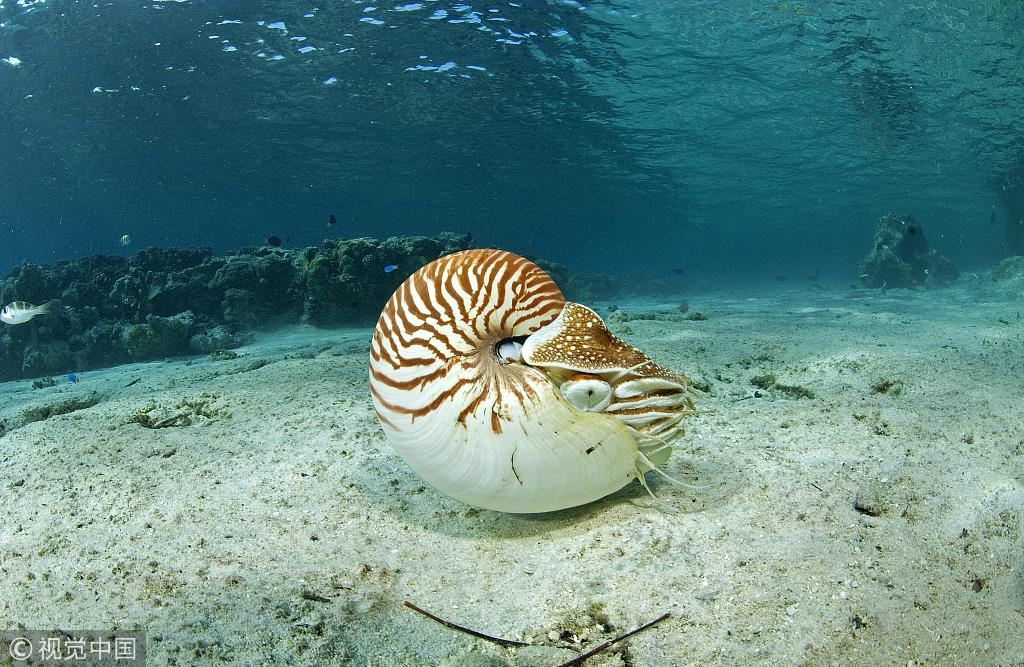
A chambered nautilus. /VCG Photo
A chambered nautilus. /VCG Photo
With relatively weak propulsion ability, the nautilus is not an outstanding speedster. Instead, it prefers ambushing smaller crustaceans and worms.
Nautiluses start to look for food by themselves as soon as they are hatched in the sea.
As the only cephalopod that has a visible shell, they don't show the weakness of the mollusk, which explains why they've lived through the massive extinctions.

A chambered nautilus. /VCG Photo
A chambered nautilus. /VCG Photo
They also have the longest lifespan among the cephalopods with almost 20 years, although their low development and reproduction rates make them especially vulnerable to overharvesting.
Artificial rearing of the nautilus is hard, as they usually live at hundreds of meters below sea level, a place with great pressure.
Due to lack of data, the IUCN has not yet reviewed nautiluses for inclusion on the Red List.
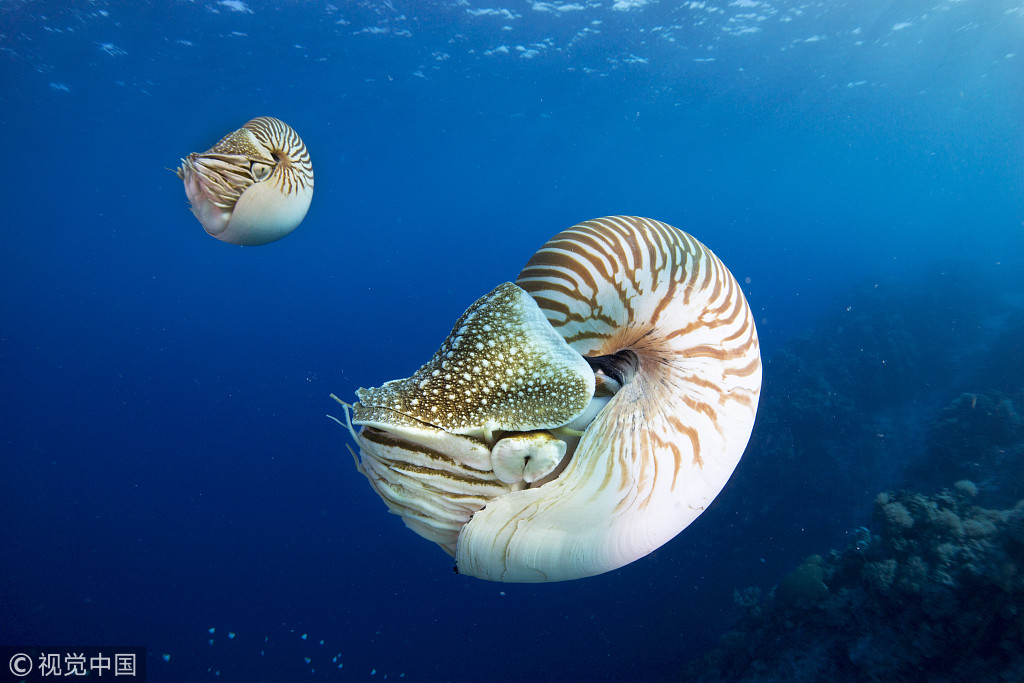
Palau nautiluses. /VCG Photo
Palau nautiluses. /VCG Photo
Life Below Water
World Wildlife Day was established by the United Nations (UN) in 2013 to raise people's awareness of protecting wild animals and plants on Earth. This year on March 3, the theme is “Life Below Water: For People and the Planet.” In this series, we're presenting the diverse marine lives in China, focusing on the endangered ones such as the Yangtze finless porpoise and spotted seals that are in need of protection by the government, NGOs and individuals.
(Cover image: A chambered nautilus. /VCG Photo)
(If you want to contribute and have specific expertise, please contact us at nature@cgtn.com.)

SITEMAP
Copyright © 2018 CGTN. Beijing ICP prepared NO.16065310-3
Copyright © 2018 CGTN. Beijing ICP prepared NO.16065310-3